 United Kingdom (1958-68) – HMS Oberon Odin Orpheus, Olympus, Osiris, Onslaught, Otter, Oracle, Ocelot, Otus, Opossum, Opportune, Onyx, Onyx (1960-1995).
United Kingdom (1958-68) – HMS Oberon Odin Orpheus, Olympus, Osiris, Onslaught, Otter, Oracle, Ocelot, Otus, Opossum, Opportune, Onyx, Onyx (1960-1995).The Oberon class were 27 British-designed submarines also exported to five navies, designed as a follow-on from the Porpoise class, very similar but with of stronger construction, better silencing and improvements across the board. Instrumental as the main arm of the British Royal Navy during the Cold War, they were tasked of surveillance, tracking and shadowing Soviet ships and monitoring other submarines, but also special operations, delivering and retreiving these in still classified missions today. Later in their career they acted as training boats and as targets for anti-submarine training, having an exceptionally long service until 2000. They are taunted and recoignised by many historians today as the best conventional submarine class of its time, known for remarkable quietness until the German Type 212 did better. They provided until recent replacement the bulk of the Australian and Canadian Navy sub force as well. #coldwar #royalnavy #oberon
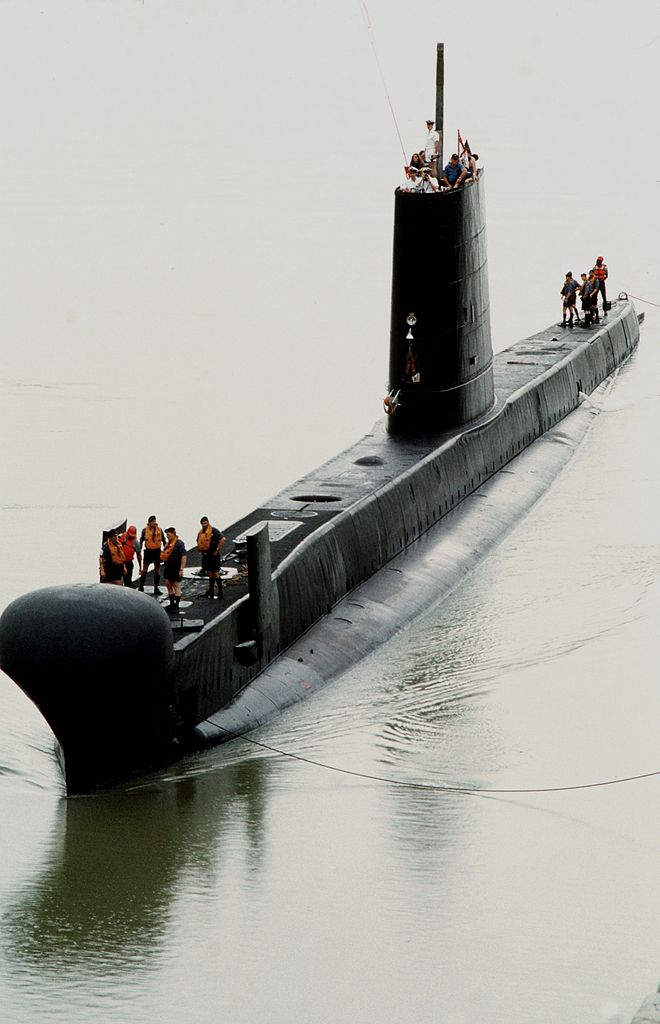
Development
By the time the last of these were built (The Chilean Hyatt commissioned in September 1976), the USN long went up for a new “teardrop” design SSN and tried to achieve unprecedented levels of quietness. Yet, the Oberons were still relevant in that matter, especially compared to its Soviet counterparts. Meanwhile, Britain stuck with the Porpoise design, after the estimation that stealthiness underwater was more important than pure speed. After all they were versatile boats, not hunter killers. But they were made larger than ther Portpoise at 295.2-foot (90 m), and were due to dive deeper, with an improved hull the strength made not with the UXW steel, but the new QT28 steel easier to fabricate and stronger. The casing was made of Glass-reinforced plastic to make it lighter anf improve stablity, and also easier to repair.
Electronics, sonar, and radar systems were all upgraded to the latest standard as well. They were constructed in many shipyards (see below). The six Australian and two Chilean submarines by Scotts Shipbuilding and Engineering Co. after merging with Scott Lithgow and the three Brazilian ones by Vickers-Armstrongs, three Canadian ones at Chatham.
They were built between 1957 and 1978, in four shipyards:
-Cammell Laird (4):
-Chatham Dockyard (6):
-Scotts Shipbuilding and Engineering Company (11):
-Vickers-Armstrongs (6).
13 were operated by the Royal Navy, 6 by the Royal Australian Navy, 3 by the Brazilian Navy, 3 by the Royal Canadian Navy later renamed the Canadian Forces Maritime Command and the latter also operated two ex-RN boats later for non-commissioned roles. Two more were purchased by the Chilean Navy (see later).
Design of the class
Hull and general design
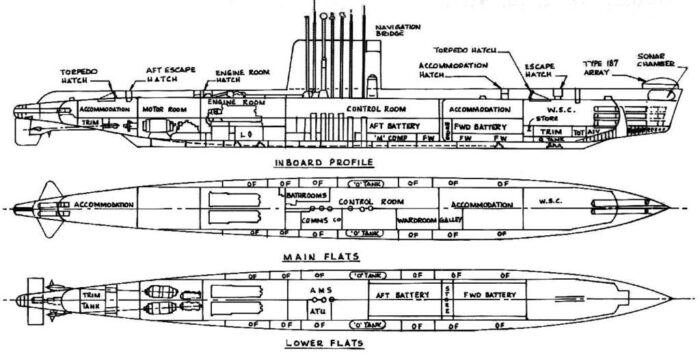
Albeit their hull and general design was very similar to the previous Porpoise class, bith in general hull shape and fin, they diverged in many details, and ended longer. They displaced 2,030 t (2,000 long tons) surfaced for 2,410 t (2,370 long tons) submerged, versus 2,080 tons surfaced/2,450 tons submerged, a paradox as they were longer at 295.2 ft (90 m) versus 290 ft (88 m) but with the exact same beam of 26.5 ft (8.1 m) and draught 18 ft (5.5 m). For all the rest of details see the Porpoise class. The powerplant was however significantly different. Unlike the Porpoise at no point they were inteded to carry a deck gun.
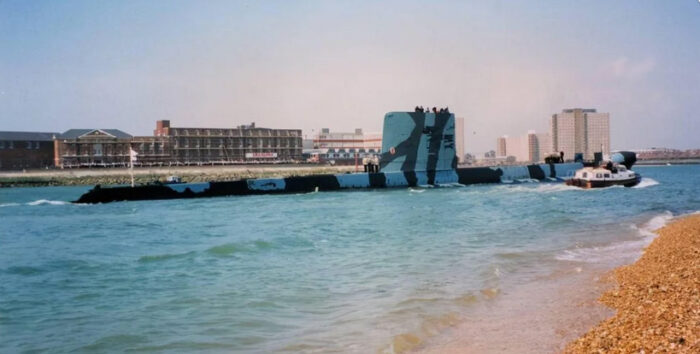
A camouflaged Oberon class, HMS Otis (S-18) returning to Portsmouth, in early April 1991 after Operation Desert Storm. She and HMS Opossum (S-19) were deployed to the Gulf to deliver special forces on missions to Iraq and Kuwait. In order to be able to operate offshore, the two submarines were painted in camouflage which was to confuse the line of sight through contrasts of light and shade, mainly for submarine activities offshore at dawn or at night, with reefs and waves in the distance. (Reddit)
Apart their much stronger hull for deeper dives down to 650 ft (200 m), probably around 600 feet for the Porpoises, they had a more generous sonar dome at the bow, but otherwise were a repeat of the previous design, wich improved suspension to even increase their noise reduction. This was their best defence. Still, they also carried the same electronics suite with minor differences, a better fire control and central control operation, were better provided for air conditioning and had extra space for a comparable crew. However they were not popular as some modifications led to retire three bed bunks. For active protection they carried like the previous Boats a pair of aft short Mark 20S defensive homeing torpedoes (see below), and for the first time a MEL Manta UAL or later the UA4 radar warning system, raised at the fin. Their hydroacoustic suite was also improved compared to the previous class. All in all, where the previous Porpoises were a pre-serie, the Oberons became the production model, 27 built instead of just 8. Of these, 13 served with the RN and the rest were exported to Australia, Canada, Brazil and Chile (see below). A sale to Egypt of second hand subs decommissioned fell through.
Powerplant
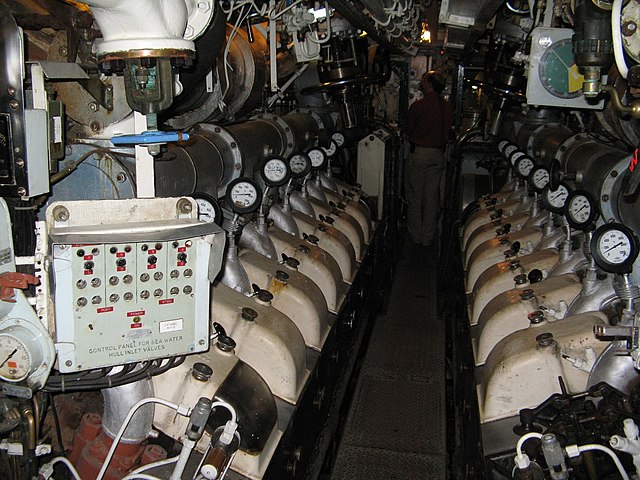
Engine compartment on HMS Otus at Sassnitz Museum, twin V16 diesel engines
The Oberons were typical SSK using diesel-electric propulsion. Diesels when surfaced, generators to reload the lead-acid batteries providing underwater propulsion.
The core are two Admiralty-pattern V-16 diesel engines ASR1 16VMS driving each a 1280-kW 880-V generator. They had clutches in order to power directly to two 3,000 bhp (2,200 kW) electric motors, connected to each propeller, or alternatively charging batteries. The diesels can be only operated with external ventilation while surfaced or under Snorkel, submerged. Each snorkel was split with a tube bringing air in, another venting out exhaust fumes. There was also an internal ventilation system spreading fresh air through the pressure hull. Snorkel use neve rprovided enough air for a full capacity run however. This only allowed limited operation or cruise, if the weather allowed it. In heavy weather indeed, water detection forced a cock shut to avoid ingress, starving the engiens for air and blocking exhaust fumes which stayed in. Not the best situation.
The generators were cooled by an internal fan placed close to the shaft, blowing air through a filter, and also a water-cooled heat exchanger placed within the casing. Pressure equalisation inside and out was added with a gauge. Each potentially noisy generator was mounted in a pedestal bearing fed with oil from the diesel engine lubrication supply to dampn vibration, also fitted with an internal heater to prevent condensation.
Two batteries completed this powerplant, each comprising 224 2V cells type D7420 for a nominal 440 V output. One was located underneath the crew accommodation compartment, and the other under the control compartment. Both had a switch circuit to spluit their use into two 112 cells groups if needed. They could provide 7420 Ah under five hour until full discharge. Rubber protects metal from acid emissions and extra electric insulation. Wood was also used, with waxed timber framing and crawlways as it was resistant to acid. The battery compartment has a sump behind to collect any spilled liquids, either seawater or acid. Each cell weighted 1,120 lb (510 kg) alone, filled with 18.5 gallons of electrolyte. They were held in place with wooden wedges, easy to maintain and replace. Each cell was linked by four connector bolts each with an electrode and agitator pipe which bubbles air through the cell to shuffle the electrolyte at all time. Cooling water arrived through pipes to the electrode connectors to avoid them overheating. The whole battery temperature was also monitored at all time.
Normal operation implied that each battery was charged until 560 V, before another hour of charge, up to 5 hours after that treshold to ensure maximum charge. Every two months it was gvien an equalising charge for eight hours check the cells. Gravity of the electrolyte were comprised between 1.080 and 1.280. The Initial charging current was rated for 1650 amps and fell to 280 Amps when full charging was done. At 538 V they startred however to gave off explosive hydrogen gas so power was adjusted to avoid reaching that charge level. In emergency this could go up to 2000 A. Batteries needed to be completely discharged every 4 months over five-hour, and then recharged. Their compartments were sealed to prevent gases out or salt water in also. Ventilation fans were present to extract hydrogen at all time plus catalytic converters to remove hydrogen from the air, recombining it with oxygen, after which excess water was collected and recycled.
The batteries provided variable DC power rated from 390 to 650 V. They supplied the ballast pumps as well as water and air compressors, the ventilation and cooling, systems and even all hydraulics. However this was applied to some equipments, more sensible and supplied by two sets of auxiliary motor generators. They could be coupled with the batteries if eneded to produce a stable output. There was a 220 V DC supply from these two 100 kW (130 hp) generators, one from each battery and two 15 kW (20 hp) 60 Hz three-phase alternators to feed 115 or 230 V AC equipments as well as two more 15 kW 400 Hz generators for 205 V AC. The latter was used by sensible equipmnets such as the radar, sonar, fire control, and communications systems. Lastly, there were two 4 kW (5.4 hp) generators and additional backup battery rated for 24 V DC. This provided ample options and backups to restart the boat even in a major energy loss.
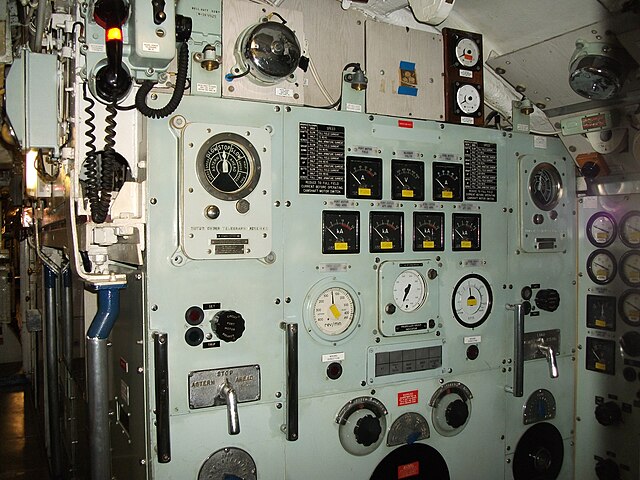
Propeller motor control panel: The panel telegraph (top and left) showed instructions issued from the motor telegraph position beside the helm station in the control room which were to be carried out.
The two propellers were connected each to a 3000 bhp DC electric motor, designed with two separate armatures but making the same unit. They too, were dampened though suspended frames. Speed could be finely tuned using the batteries and engines in different series and parallel combinations. When the batteries were connected in parallel at 440 V, there was 110 V to each shaft for slow speed. Whe applied to the two motors in parallel in “group down” configuration, 220 V was provided to each shaft. When both batteries were applied in parallel across all four armatures they reached the max 440 V to each, or they could be arranged in series for 880 V, all four armatures in parallel at max. 35 Amp and a 17 knots underwater top speed, governed.
Both Eletric motors had a sealed oil sump for oil lubricating the bearings. Cooling counted on fans sucking air out of the engine room through the motor, returning hot exhaust through a water-cooled heat exchanger. This prevented damage from leak in the cooler. A heater to keep also kept them warm when silent, preventing internal condensation.
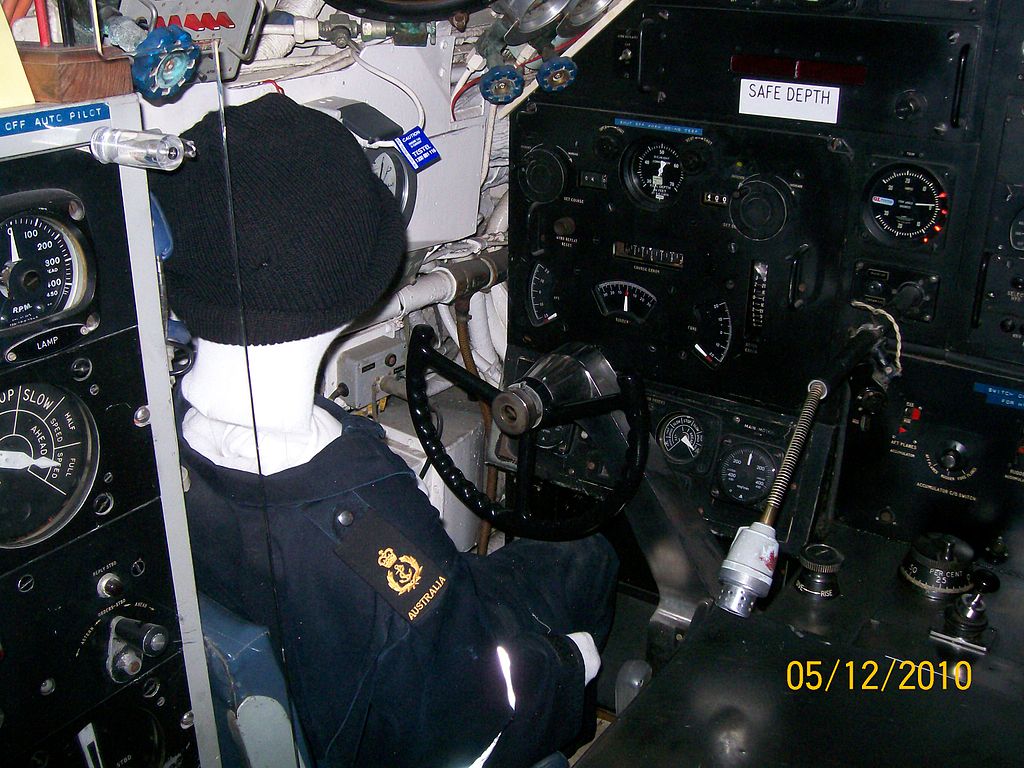
Control Helm aboard an Oberon class.
Armament
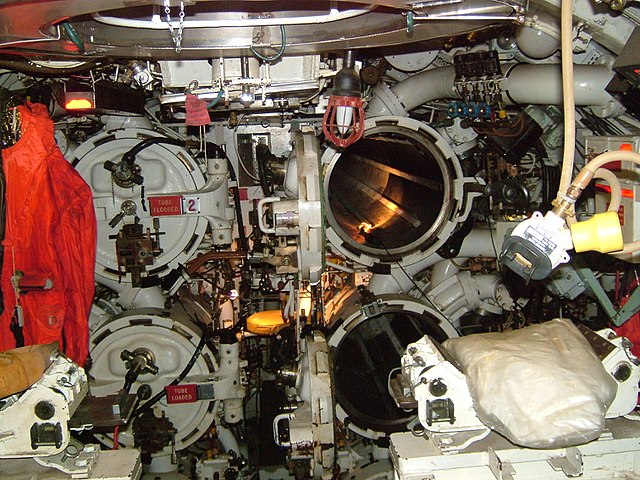
Forward torpedo tubes on HMS Ocelot
The Oberons were planned with eight 21-inch (533.4 mm) torpedo tubes with six in the bow, two shorter tubes at the stern. Non releoadabble, they were intended for ASW defence. The normal load was 20 torpedoes, all for the forward tubes. Types differed in time but soon they obtained as a maintstay the Mark 24 Tigerfish completed hby the Mark 8 torpedoes. Two preloaded Mark 20S torpedoes were in the stern tubes. 50 Naval mines could be carried instead of torpedoes, of the 533 mm ior 21 inches diameter Mark 5 Stonefish or Mark 6 Sea Urchin. Several could be loaded inside each tubes and then launched in turn.
The forward torpedo tubes were built from two sections bolted together across the bulkhead. There were composed of a 116-inches of 2,90 m long inner section made of 0.5-inch (1.3 cm) rolled steel. These were fitted with welded flanges and support brackets for extra strenght. The outer section was composed of 175 inches (440 cm) long tubes but the reinforced 1.125-inch thick (2.86 cm) section remaining behind the main bulkhead. Internal door hinges were placed in the inner hull with two heavy dury locking mechanisms, swing bolt oppositing the hinge and rotating locking ring attached to the tubes, pressing down ten projecting lugs around the door for extra safety. The outer end was fully sealed with a domed bow cap. Bow shutters were closed in addition across the bow caps to preserve streamlining when closed flush.
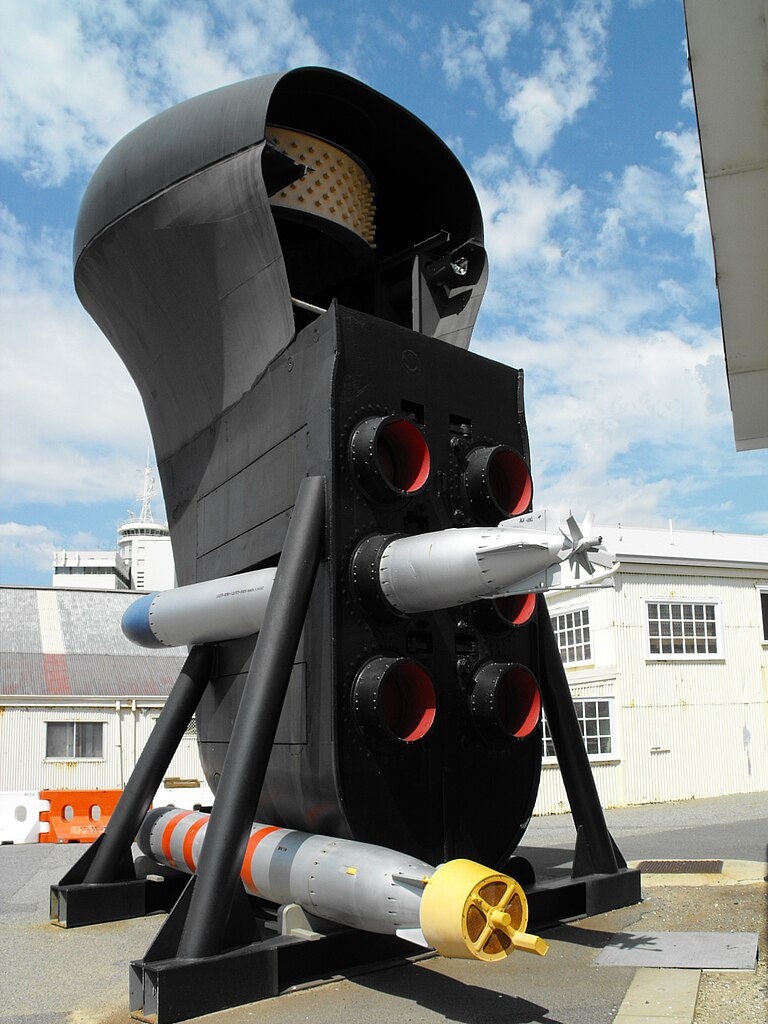
The preserved bow section of HMAS Oxley shows the modified sonar dome and mockup of the bow sonar array.
The bow caps and shutters were mechanically linked to the hydraulically operated drive rod inside the torpedo compartment. The external bow cap opened first behind the shutter, and folded back against to create a smooth exit tube with interlocks preventing the doors at both ends being opened at the same time (a hard lesson learned in the past). The inner door in addition had a test cock to check if it was full before opening, remaining nearly closed by the swing bolt after released. Another perk is that the inner jacketed tub was not strict 21 cm or 540 mm but 22.5 inches instead or 571 mm, much wider than the torpedo, for a looser fit inside. This gave some extra room to increase later the torpedoes or add some extra bits to the torpedoe bodies. In any case, these torpedoes could be fired electrically or with compressed air.
The aft tubes were located inside the rear ballast tank, outer hull. There was a projecting 31-inch (79 cm) section through the bulkhead for a 12 feet (3.7 m) long tune, 25-inch (640 mm) diameter, which was considerable. It is possible part of it would contain potentially a wire-guided model and thus, the folded wire around the torpedo. Mark 20S torpedoes were however discarded in the 1980s and stern tubes decommissioned, but still used for storing beer as they were accessible from the pressure hull.
Mark 8 Torpedo
The good old burner cycle torpedo, entering service in 1927. A stable of sub operations in WW2, they were still in service with large stockpiles postwar. They however has a straight course with classic settings, nothing revolutionary but were available in quantities and could be used on less important targets when in patrol. The Mod 4 was an evolution of WW2. This was one of these thant was operated by HMS Conqueror and sank the Argentine cruiser General Belgrano.
⚙ specifications Mark VIII mod 4 |
|
| Weight | 3,452 lbs. (1,566 kg) |
| Dimensions | 259 in (6.579 m) |
| Propulsion | Burner-cycle |
| Range/speed setting | 5,000 yards (4,570 m)/45.5 knots or 7,000 yards (6,400 m)/41 knots |
| Warhead | 805 lbs. (365 kg) Torpex |
| Guidance | Straight, initial setting |
It’s possible they tested the HPT running 21″ (53.3 cm) Mark 12 (Ferry) torpedo from 1952, but they were considered dangerous and not adopted eventually. The WW2 “S” class submarine HMS Sidon loaded two Mark 12 torpedoes on 16 June 1955 for a test firing and one of these torpedoes exploded in her No. 3 tube, killing 13. The submarine was a write off as was this model.
Mark 20S Torpedo
This was the first British passive homing torpedo. The model adopted was the Mark 20S, entering service in 1955. So they were already in use with the T and A conversions. The surface version was abandoned because its preset attack data system was unreliable, leaving only sublarine variants. The Mark 20C was a successor developed in the early 1960s and replaced by Tigerfish in the 1980s.
These were placed in the Oberon’s rear tubes and discarded from 1986.
⚙ specifications Mark 20S TORPEDO |
|
| Weight | 1,810 lbs. (821 kg) |
| Dimensions | 254.5 in (6.464 m) |
| Propulsion | Battery |
| Range/speed setting 20S | 12,000 yards (11,000 m)/20 knots |
| Range/speed setting 20C | 7,000 yards (6,600 m)/23 knots |
| Warhead | 196 lbs. (89 kg) |
| Max depth | Unknown |
| Guidance | Homing, active/passive |
Mark 24 Tigerfish

Despite many problems, the Mk 24 Tigerfish came into service in 1970, being followed in the 1990’S by the new heavy Spearfish. This was the most advanced torpedo ever designed for submarines in UK.
They were indeed wired guided, which defeated any possible counter measure, then the cable was cut at some distance and passive sonar, then terminal homing led to the target. It was unstoppable in a range of 40 km at low speed. Developed from 1965, first prototypes were tested in 1967 and it enterred service however only from 1979. A new project was started which followed the same requirement but greatly surpassed it and became the Spearfish torpedo, replacing Tigerfish from 1988. The Tigerfish was retired in 2004 from the RN but is still operated by Turkey, Chile, Brazil, Colombia and Indonesia with 2,184 Mk. 24s produced. It was developed into the baseline Mod 0, Mark 24-Mod-1 and 2 Heavyweight dual-purpose ASW and ASuW torpedo. Best armament of the Oberons, although they cost much more than the Mark 8.
⚙ specifications Mark 24 Tigerfish |
|
| Weight | 1,550 kg (3,417 lb) |
| Dimensions | 6.5 m (21 ft) x 533 mm (21 in) |
| Propulsion | Chloride silver-zinc oxide batteries |
| Range/speed setting | 39 km (43,000 yd) low speed, 13 km (14,000 yd) 35-knot |
| Warhead | 134 to 340 kg (295 to 750 lb) Torpex |
| Max depth | Unknown |
| Guidance | Wire-guided to point, passive sonar acquisition/terminal homing sonar |
Stonefish Mines
Developed in UK but answering a specification of the RAN for their own class of Oberon submarines, the Oxley class. 533 mm (21 in) diameter but half the lenght of a stadard torpedo, using a warhead in aluminised PBX. They were designed for fixed-wing aircraft, helicopters, surface vessels and submarines. They used a computerised explodern microprocessor-basedn featuring acoustic, magnetic and water pressure displacement target detection sensors. They were also operated by the Collins class SSK.
Sensors
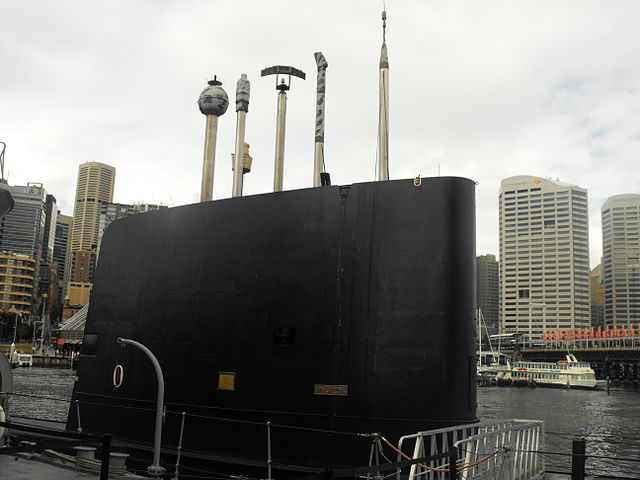
These were equipped with a type 1002 surface search and navigation radar, type 187 active-passive attack sonar, type 2007 long-range passive sonar:
Type 1002 radar: Operating in X-band, surface+air warning and ranging. Type AKU(3) or AKS(2) antenae for 360° or sector mode. Displays on a PPI scope and A-scope for range finding. FRQ 9 650 MHz ± 50 MHz (X-band), pulse repetition frequency (PRF): 400 to500 Hz or 2 000 to 2 500 Hz, pulsewidth 1 µs or 0.2 µs, peak power 30 kW.
Type 187 sonar: 1953 model, for Active-Passive attack. Used a dome housing on the prow.
Type 2007 sonar: Hull mounted long-range passive sonar, upgraded from the Oberon class.
Type 2009 sonar: Underwater acoustic recognition system.
UAH ECM suite: Designed by L3Harris, no more data.
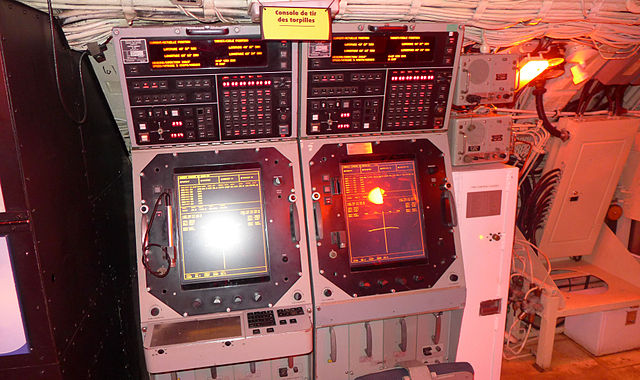
Fire control console
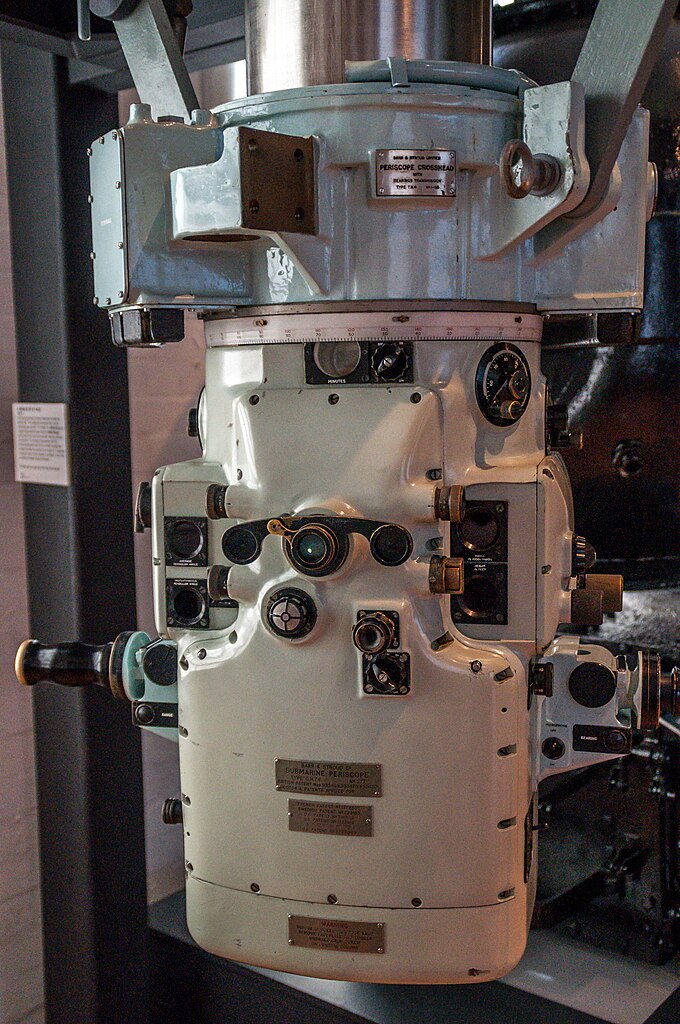
Attack periscope

HMS Oberon as completed

HMS Otus in 1991 with her gulf war camouflage, spec ops.
⚙ Oberon class specs. |
|
| Displacement | Surfaced 2,030 t, Submerged 2,410 t |
| Dimensions | 295.2 x 26.5 x 18 ft (90 x 8.1 x 5.5 m) |
| Propulsion | 2 shafts 1,840 hp Admiralty V16 diesels, 2x 1,280 kW generators, 2x 3,000 hp EM |
| Speed | 12 knots (22 km/h; 14 mph) surfaced, 17 knots (31 km/h; 20 mph) submerged |
| Range | 10,350 nautical miles (19,170 km; 11,910 mi) surfaceed at 10 kts |
| Armament | 6× 21 in bow tubes, 20 torpedoes, 2× 21 in short stern tubes. 50× mines |
| Test depth | 650 ft (200 m) |
| Sensors | Type 1002 radar, Type 187 AP attack sonar, Type 2007 LRP sonar, Manta, UA4 radar warning |
| Crew | 7 officers+ 62 sailors |
Videos
HMS Odin (S10) Royal Navy Oberon Class diesel-electric Submarine surveillance operations 1976
OBERON CLASS SSK BRIEF – NO.34
RAN Oberon Submarines Secret Cold War Missions
Career of the Oberon class boats
 HMS Oberon (S09)
HMS Oberon (S09)
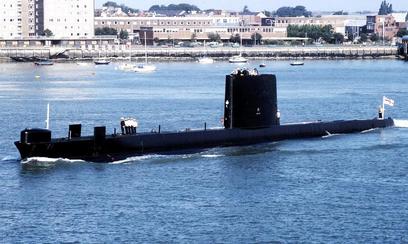 HMS Oberon was laid down at Chatham Dockyard the first on 28 November 1957, launched on 18 July 1959 and completed on 24 February 1961. Her cost was £2.43 million and she was the first of the class to have a deeper casing installed to house the initial SSN crews training, notably fior HMS Dreadnought (soon, this month). She ran aground in Rothesay Bay in the early 1960s but was soon refloated. Logs not available. She was was paid off in 1986. She was decommissioned in 1986, sold in 1987 to the Seaforth Group in order to be refitted and resold to Egypt but the deal went bust and she was instead broken up at Grimsby in 1991.
HMS Oberon was laid down at Chatham Dockyard the first on 28 November 1957, launched on 18 July 1959 and completed on 24 February 1961. Her cost was £2.43 million and she was the first of the class to have a deeper casing installed to house the initial SSN crews training, notably fior HMS Dreadnought (soon, this month). She ran aground in Rothesay Bay in the early 1960s but was soon refloated. Logs not available. She was was paid off in 1986. She was decommissioned in 1986, sold in 1987 to the Seaforth Group in order to be refitted and resold to Egypt but the deal went bust and she was instead broken up at Grimsby in 1991.
 HMS Ocelot (S17)
HMS Ocelot (S17)
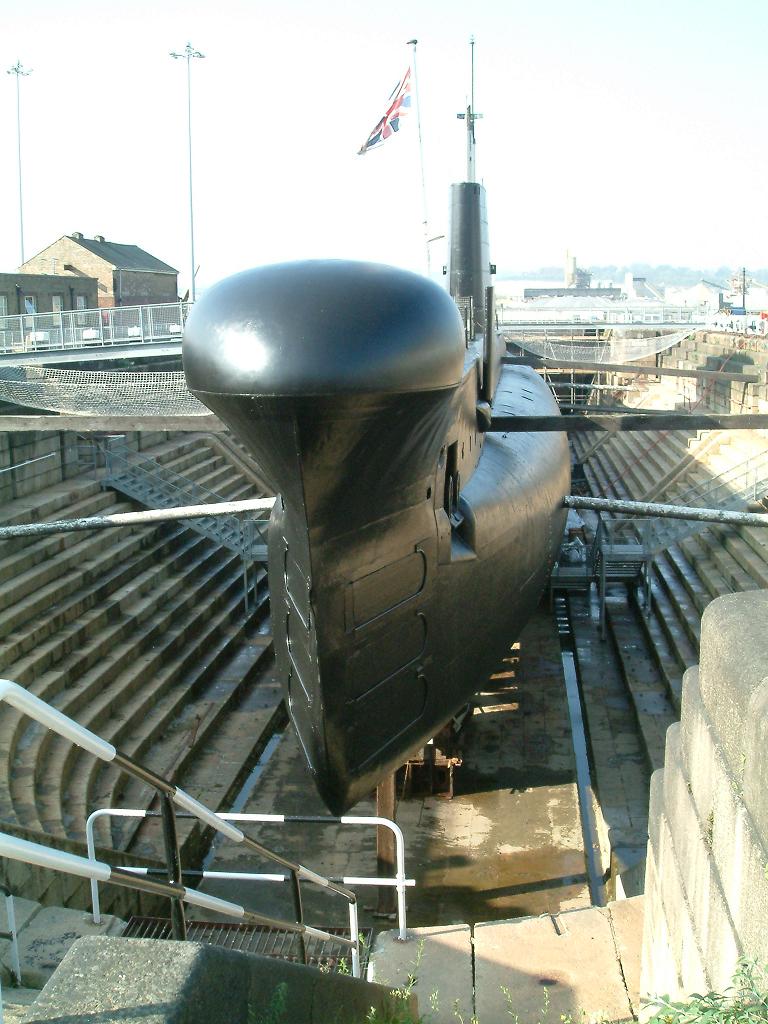
HMS Ocelot in drydock at Chatham Historic Dockyard, photo by Mark Murphy
Ocelot was laid down also at Chatham, but on 17 November 1960. She was launched on 5 May 1962 and completed on 31 January 1964. She was assigned to the 3rd Submarine Squadron, HMNB Clyde, Faslane, for three years. She took part in clandestine missions, still classified. She attended the 1977 Silver Jubilee Fleet Review off Spithead.
She was was paid off in August 1991; decommissioned, sold in 1992 but preserved as a fully tourable museum in Chatham Historic Dockyard. She was added to Google Street View. Photos in a link below, check the 3D section.
 HMS Odin (S10)
HMS Odin (S10)
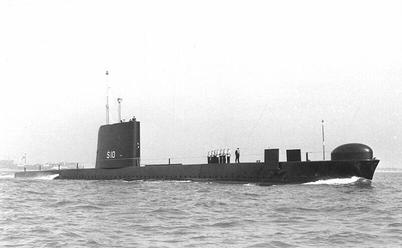 Odin was laid down at Cammell Laird on 27 April 1959, launched on 4 November 1960 and completed on 3 May 1962. No logs nor data yet. She was decommissioned on 18 October 1990 and sold for scrap in 1991.
Odin was laid down at Cammell Laird on 27 April 1959, launched on 4 November 1960 and completed on 3 May 1962. No logs nor data yet. She was decommissioned on 18 October 1990 and sold for scrap in 1991.
 HMS Olympus (S12)
HMS Olympus (S12)
Olympus was laid down at Vickers-Armstrongs on 4 March 1960, launched on 14 June 1961 and completed on 7 July 1962. By September 1967 she searched for a downed French Navy Breguet Atlantic off RAF Kinloss. By April 1982, shed left HMNB Devonport, publicly bouned for the South Atlantic to join the Falklands War while in reality she took part in NATO exercises off Scotland. After a refit at Devonport by July with a new Aluminum Fin and 5-man swim-out chamber for special forces swimmers she joined the 1st Submarine Flotilla at Gosport. In 1986 she was featured on the Channel 4 TV game show “Treasure Hunt”. Presenter Anneka Rice was in helicopter whe she surfaced. The helicopter landed on her hull and for a clue from captain, Lt. Cmdr. John Tuckett. After being retired, she sold to the Canadian Forces in 1989 but kept as a non-operational training boat in Halifax. Decommissioned in 1988, she sold for scrap in 2011.
 HMS Onslaught (S14)
HMS Onslaught (S14)
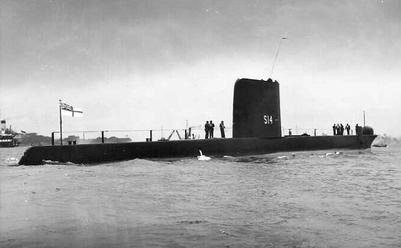 HMS Onslaught was laid down at Chatham on 8 April 1959, launched on 24 September 1960 and completed on 14 August 1962. She was first assigned to the 2nd Submarine Squadron in Devonport, reassigned to Singapore and 7th Squadron in 1966, refitted in Devonport 1970-1972 and assigned to the 1st Squadron in 1972. It is not known after 1983 is unknown. Lohs still awaited for her Mediterranean and Baltic patrols from 1986 to 1988, all classified. She was paid off in 1990, BU up in Aliaga, Turkey in 1991.
HMS Onslaught was laid down at Chatham on 8 April 1959, launched on 24 September 1960 and completed on 14 August 1962. She was first assigned to the 2nd Submarine Squadron in Devonport, reassigned to Singapore and 7th Squadron in 1966, refitted in Devonport 1970-1972 and assigned to the 1st Squadron in 1972. It is not known after 1983 is unknown. Lohs still awaited for her Mediterranean and Baltic patrols from 1986 to 1988, all classified. She was paid off in 1990, BU up in Aliaga, Turkey in 1991.
 HMS Onyx (S21)
HMS Onyx (S21)
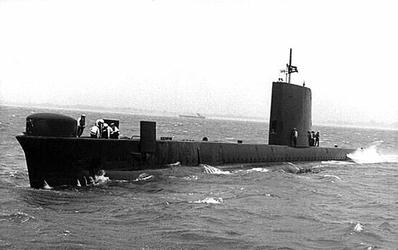 Onyx was laid down at Cammell Laird on 16 November 1964, launched on 18 August 1966 and completed on 20 November 1967. A previous Oberon named Onyx became the Canadian Ojibwa, see below. She visited Swansea, South Wales for the investiture of the Prince of Wales and attended the bicentennial celebrations of the US in 1976. During the Falkland wars she became the only non-nuclear subm taking part in operations with a special 5 man diving chamber and ten MK 24 Tigerfish torpedoes, two Mk 20S, 11 Mk 8s. She was used for reconnaissance of enemy installations around the Falklands operating SBS and SAS special forces at Ascension Island. Due to the 200 years old chart she hit an uncharted pinnacle while under 150 feet (46 m), damaging her bow. The Argentine claimed she had been hit by a torpedo from theirs S-2E Tracker from ARA Veinticinco de Mayo, 70 nautical miles (130 km; 81 mi) off the coast. The S-2 twice reportted indeed sub-surface and electronic traces plus a magnetic anomaly while searching ARA Alférez Sobral previous hit by Sea Skua missiles from Westland Lynxes.
Onyx was laid down at Cammell Laird on 16 November 1964, launched on 18 August 1966 and completed on 20 November 1967. A previous Oberon named Onyx became the Canadian Ojibwa, see below. She visited Swansea, South Wales for the investiture of the Prince of Wales and attended the bicentennial celebrations of the US in 1976. During the Falkland wars she became the only non-nuclear subm taking part in operations with a special 5 man diving chamber and ten MK 24 Tigerfish torpedoes, two Mk 20S, 11 Mk 8s. She was used for reconnaissance of enemy installations around the Falklands operating SBS and SAS special forces at Ascension Island. Due to the 200 years old chart she hit an uncharted pinnacle while under 150 feet (46 m), damaging her bow. The Argentine claimed she had been hit by a torpedo from theirs S-2E Tracker from ARA Veinticinco de Mayo, 70 nautical miles (130 km; 81 mi) off the coast. The S-2 twice reportted indeed sub-surface and electronic traces plus a magnetic anomaly while searching ARA Alférez Sobral previous hit by Sea Skua missiles from Westland Lynxes.
Operation Mikado was cancelled. It would have consisted in sending SAS on Argentina’s shore to find and destroy the remaining stockpile of Exocet missiles. Onyx sank the hulk of the landing ship RFA Sir Galahad with a Mk 8 Torpedo and two Mk 24 Tigerfish after being damaged beyond repair by the Argentine Air Force at Fitzroy/Bluff Cove.
Defence cuts saw Onyx decommissioned in 1991, placed to the Warship Preservation Trust, on public display in Birkenhead.
In May 2006, she was sold to Joe Mullen for £100,000 and to be exhibited at Barrow, leving Birkenhead on 13 June 2006 to join the Submarine Heritage Centre but the company went into debt and she was sold for scrap. Twoed to Scotland on 18 July 2014, scrapped in Rosneath.
 HMS Opportune (S20)
HMS Opportune (S20)
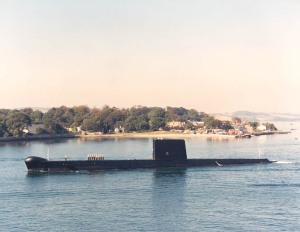 She was from Scotts Shipbuilding, laid down on 26 October 1962, launched 14 February 1964 and completed on 29 December 1964. On 15 February 1967, she had acollision with HMS Orpheus when leaving Portsmouth at night and in heavy weather. There was only minor damage. In 1971, she collided with a merchant ship which mushed her fin and periscopes. She attended the 1977 Silver Jubilee Fleet Review off Spithead. She was decommissioned on 2 June 1993 and sold for scrap.
She was from Scotts Shipbuilding, laid down on 26 October 1962, launched 14 February 1964 and completed on 29 December 1964. On 15 February 1967, she had acollision with HMS Orpheus when leaving Portsmouth at night and in heavy weather. There was only minor damage. In 1971, she collided with a merchant ship which mushed her fin and periscopes. She attended the 1977 Silver Jubilee Fleet Review off Spithead. She was decommissioned on 2 June 1993 and sold for scrap.
 HMS Opossum (S19)
HMS Opossum (S19)
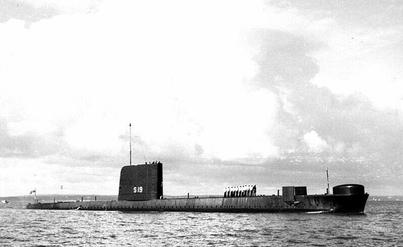 HMS Opossum was laid down at Cammell Laird on 21 December 1961, she as launched on 23 May 1963 and commissioned 5 June 1964. In September 1990 she was at the bicentennial celebrations at Pitcairn Island. She was deployed for the 1991 Gulf War under Operation Granby. Back to to Gosport, she was flying a Jolly Roger after deploying SAS and Special Boat Service personnel. On 14 July 1993, she collided while surfaced by the fishing vessel Amber Rose off Scotland. In August 1993 she was sold for scrap.
HMS Opossum was laid down at Cammell Laird on 21 December 1961, she as launched on 23 May 1963 and commissioned 5 June 1964. In September 1990 she was at the bicentennial celebrations at Pitcairn Island. She was deployed for the 1991 Gulf War under Operation Granby. Back to to Gosport, she was flying a Jolly Roger after deploying SAS and Special Boat Service personnel. On 14 July 1993, she collided while surfaced by the fishing vessel Amber Rose off Scotland. In August 1993 she was sold for scrap.
 Oracle S16
Oracle S16
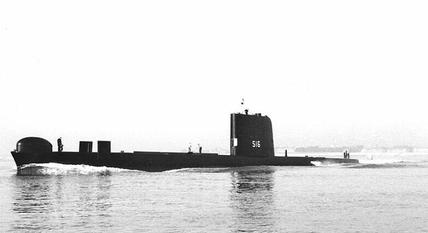 Oracle was laid down at Cammell Laird on 26 April 1960, launched 26 September 1961, 14 February 1963. She performed three-month secret reconaissance mission in the Arctic region in the 1965 and took part the standdown for the Rhodesian independence. She attended the 1977 Silver Jubilee Fleet Review off Spithead. She was featured in the 1980s BBC documentary series “Submarine”. She was decommissioned on 18 September 1993. Sold for scrap in 1997.
Oracle was laid down at Cammell Laird on 26 April 1960, launched 26 September 1961, 14 February 1963. She performed three-month secret reconaissance mission in the Arctic region in the 1965 and took part the standdown for the Rhodesian independence. She attended the 1977 Silver Jubilee Fleet Review off Spithead. She was featured in the 1980s BBC documentary series “Submarine”. She was decommissioned on 18 September 1993. Sold for scrap in 1997.
 Orpheus (S11)
Orpheus (S11)
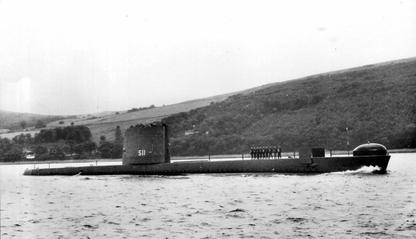 Orpheus was from Vickers-Armstrongs, laid down on 16 April 1959, launched on 17 November 1959 and completed on 25 November 1960. By mid-1964, she joined the 3rd Submarine Flotilla at Faslane. In June 1965 she performed escape trials off Malta setting a record at 500 feet (150 m) in free ascent. She later trained Canadian and Australian crews for their own Oberon-class subs in construction. On 15 February 1967 she collided with her sister-ship Opportune by night in poor weather and darkness off Portsmouth. She also attended the 1977 Silver Jubilee Fleet Review. She was decommissioned in 1992 and sold for scrap in 1994.
Orpheus was from Vickers-Armstrongs, laid down on 16 April 1959, launched on 17 November 1959 and completed on 25 November 1960. By mid-1964, she joined the 3rd Submarine Flotilla at Faslane. In June 1965 she performed escape trials off Malta setting a record at 500 feet (150 m) in free ascent. She later trained Canadian and Australian crews for their own Oberon-class subs in construction. On 15 February 1967 she collided with her sister-ship Opportune by night in poor weather and darkness off Portsmouth. She also attended the 1977 Silver Jubilee Fleet Review. She was decommissioned in 1992 and sold for scrap in 1994.
 Osiris (S13)
Osiris (S13)
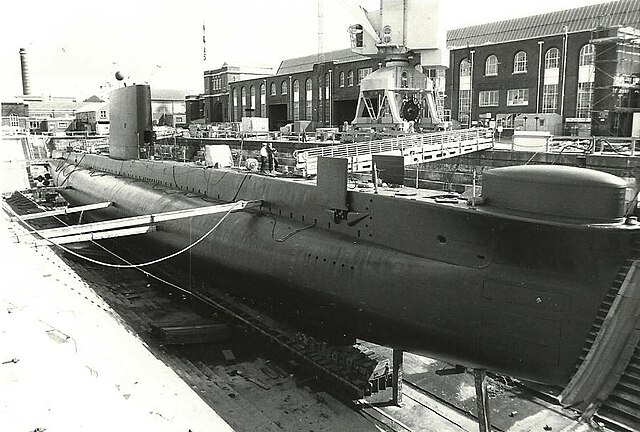
Osiris was from Vickers-Armstrongs, laid down on 26 January 1962, launched on 29 November 1962, comp. 11 January 1964. No logs before her attending the 1977 Silver Jubilee Fleet Review. She was decommissioned and sold to the Canadian Forces in 1989 for spare parts. From Birkenhead and Cammell Laird where she was stripped out. By August 1991, her remains were moved to Garston for scrapping in 1992.
 Otter (S15)
Otter (S15)
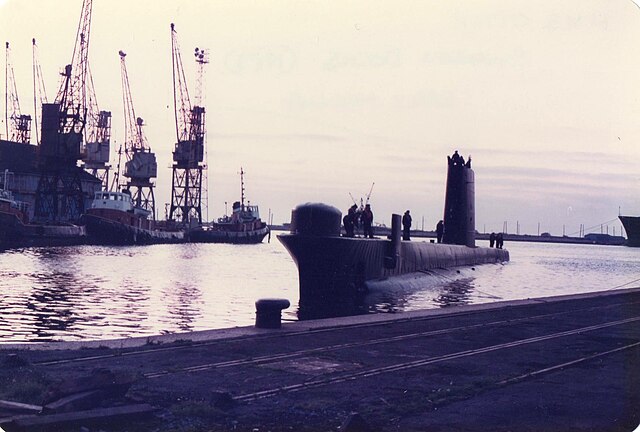
Otter was from Scotts Shipbuilding, laid down on 14 January 1960, launched on 15 May 1961, completed on 20 August 1962. She was decommissioned on 31 July 1991 and sold for scrap in 1992.
 HMS Otus (S18)
HMS Otus (S18)
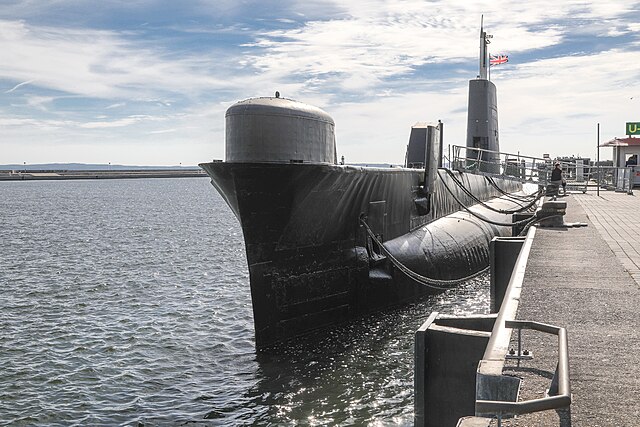
Otus was from Scotts Shipbuilding, laid down on 31 May 1961, launched on 17 October 1962, and completed on 5 October 1963. Her first commission saw her thrpn into a large-scale missile trial exercise in the Atlantic Ocean. This concluded after a US east coast and Halifax visit in Canada. She attended the 1977 Silver Jubilee Fleet Review off Spithead. In July 1987 she was trialled by a team of specialists of submarines in Bjornafjorden, Bergen, trying deeper escapes from 30 metres (98 ft) to 90 metres (300 ft). Two submariners made it down to 183 metres (600 ft), setting a new world record. WO. Norman Cook MBE, commander of the Submarine Escape Training Tower HMS Dolphin was one of these, and petty officer instructor PO. Hamish Jones BEM. Thus helped considerably improving safety on submarines and it was considered safer and quicker to escape disrectly instead to depressurise and drain down the chamber. Both escapees had no lasting effects from the decompression indeed and returned to normal service, received military honours.
Otus took part in the Persian Gulf war in 1991 with Operation Granby. Back home to Gosport, she flew the Jolly Roger for her SAS operations.
Decommissioned in the early 1990s she stayted at the Pound’s scrapyard in Portsmouth until purchased by a German entrepreneur and towed to Sassnitz, island of Rügen as a floating museum ship.
Exports
 Oxley class RAN
Oxley class RAN
Oxley Otway Onslow Orion Ovens Otama
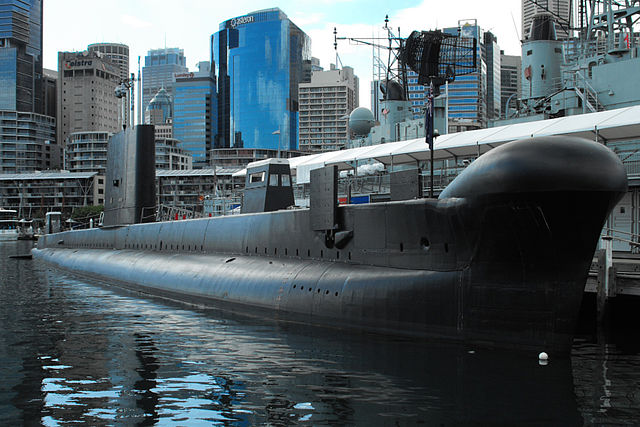
HMAS Onslow at the Sydney’s Australian National Maritime Museum
The Royal Australian Navy acquired a slightly modified Australian Oberon-class, all from Scotts Shipbuilding, commissioned in several batches between 1967 (Oxley), 1968 (Otway), 1969 (Onslow, Ovens) and 1977-78 (Orion, Otama). They were also called the “O class”. These were:
HMAS Onslow (S60) laid down 4 December 1967, launched 3 December 1968, comp. 22 December 1969 decom. 30 March 1999. Preserved at the Australian National Maritime Museum
HMAS Orion (S61) laid down 6 October 1972, launched 16 September 1974, comp. 15 June 1977. Decom. 1996, sold for scrap in 2003 but fin preserved, Rockingham Naval Memorial Park.
HMAS Otama (S62) laid down 25 May 1973, launched 3 December 1975, comp. 27 April 1978. Decom. 15 December 2000, sold for preservation 2001.
HMAS Otway (S59) laid down 29 June 1965, launched 29 November 1966 comp. 23 April 1968; Decom. 17 February 1994. Sold 1995. Parts preserved at Holbrook, New South Wales.
HMAS Ovens (S70) laid down 17 June 1966, launched 4 December 1967 comp. 18 April 1969. Decom. 1 December 1995, preserved 1998, Western Australian Maritime Museum
HMAS Oxley (S57) laid down 2 July 1964, launched 24 September 1965 comp. 21 March 1967. Decom. February 1992, sold for scrap, fin preserved at HMAS Stirling, bow at the Western Australian Maritime Museum.
These “aussie oberons” had different electronics with US supplied radar and sonar systems. They notably used the Sperry BQG-4 Micropuffs passive ranging sonar and the Krupp CSU3-41 attack sonar. They had instead of British torpedoes the Mark 48 torpedo onboard, with 22 torpedoes for the forward tubes, six preloaded for each campaign. The aft torpedo tubes were sealed and never used.
They were updated in the 1980s to fire the subsonic antiship Harpoon missile. HMAS Ovens was the first Oberon class to fire a subsurface-launched Harpoon off Hawaii, hitting its target over the horizon in 1986. In international pulications, the Oxley class became SSGs.
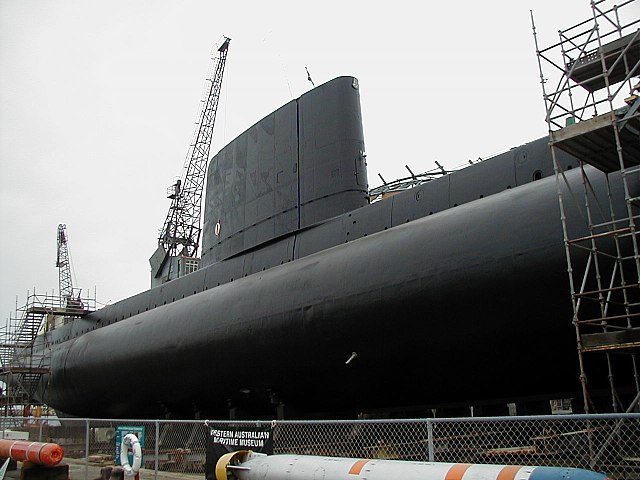
HMAS Ovens at Fremantle as preserved.
During their service they were used to conduct regularly conduct operations with special forces, in limited capability and at night. Teste were made to place the divers under the casing or disembarking them through using kayaks/inflatable boats strapped on deck. Their replacements, the Collins class, were specific to integrate such capabilities. All six Oberons were preservedetither entirely or in par, fins and CTs, on display at Western Australian Maritime Museum, Fremantle (Ovens), Australian National Maritime Museum, Darling Harbour (Sydney) for Onslow, parts of HMAS Otway at Holbrook in New South Wales. The entire HMAS Otama was kept mothballed at Crib Point, Westernport Bay in Victoria, waiting conversion into a museum vessel since 2002 but lack of funding and local support ment the volunteer sold her on eBay. Oxley’s fin stays at HMAS Stirling in Garden Island, Western Australia and Oxley’s bow is close to HMAS Ovens with HMAS Orion’s fin used as gate guardian for the memorial at Rockingham Naval Memorial Park, Western Australia.
 Humaitá class
Humaitá class
Humaitá, Tonelero, Riachuelo
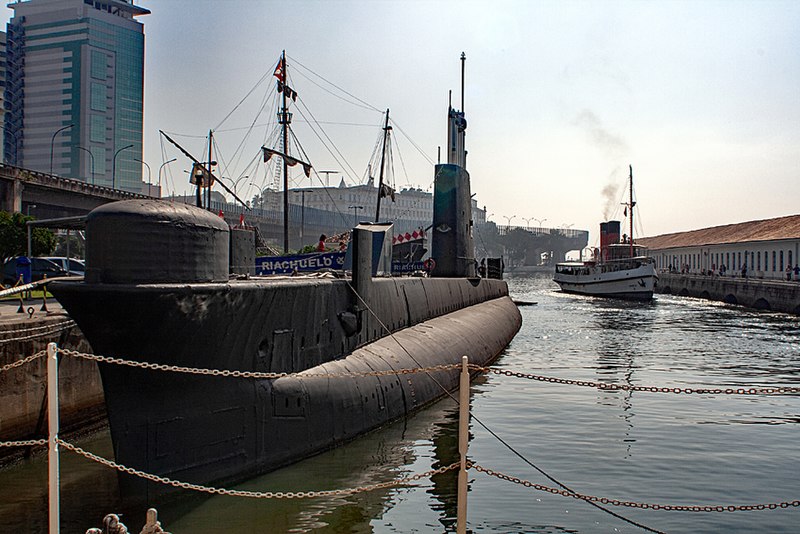
The Brazilian Navy acquired three of the class, ordered in 1970 at Vickers-Armstrongs and delivered in stage.
They were completed with new fire-control systems from Vickers and later upgraded to use the Mod 1 Tigerfish torpedo. They were considered far more discreet than the GUPPY III also in service and stayed quite long active until replacement by Type 209s and later the names were given to Scorpene class units. Tonelero sank while docked at Praça Mauá, Rio de Janeiro on 24 December 2000. She was decommissioned early. The surviving Riachuelo was converted into a museum for the Espaço Cultural da Marinha Brasileira in Rio.
-Humaitá (S20) laid down on 3 November 1970, launched 5 October 1971, comp. 18 June 1973. Decom. 1996, mothballed, fate unknown.
-Tonelero (S21) laid down on 18 November 1971, launched 22 November 1972, comp. 10 December 1977. Decom. c1996, fate unknown.
-Riachuelo (S22) laid down 26 May 1973, launched 6 September 1975, comp. March 1977. Decom. 1997, preserved at the Navy Cultural Centre in Rio de Janeiro.
 Royal Canadian Navy: Ojibwa class
Royal Canadian Navy: Ojibwa class
HMCS Ojibwa (ex-Onyx (S72)), Onondaga, Okanagan. Olympus, Osiris (parts hulk)
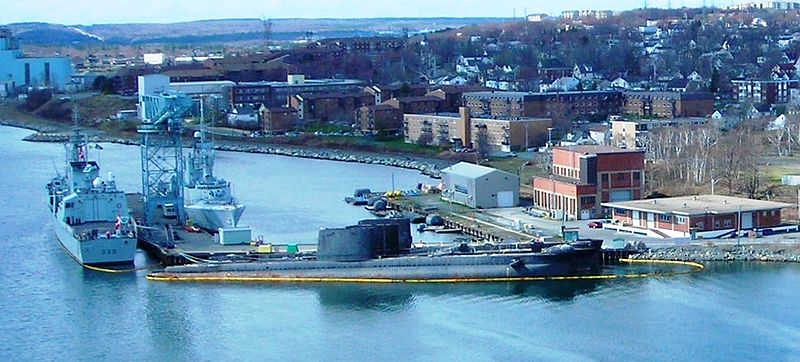
-HMCS Ojibwa (S72) was laid down at Chatham Dockyard on 27 September 1962, launched on 29 February 1964 and completed on 23 September 1965. She was decommissioned on 21 May 1998 and preserved since 2012 at the Elgin Military Museum. Originally she was laid down as Onyx but sold to Canada prior to launching.
-HMCS Okanagan (S74) was from Chatham, laid down on 25 March 1965, launched on 17 September 1966 and commissioned on 22 June 1968. She was decommissioned on 14 September 1998 and sold for scrap in 2011.
-HMCS Onondaga (S73) was from Chatham, laid down on 18 June 1964, launched on 25 September 1965 and completed on 22 June 1967. She was decommissioned on 28 July 2000. She was preserved since 2009 at the Site historique maritime de la Pointe-au-Père, Quebec.
-HMS Onyx (S21) was laid down at Cammell Laird on 16 November 1964, launched on 18 August 1966 and completed by 20 November 1967, decom. 1991 and Sold for scrap in 2014. A previous Oberon named Onyx became the Canadian Ojibwa during construction, the second Onyx being ordered as a replacement. She was preserved from 1991 to 2006 by the Warship Preservation Trust, and from 2006 to 2014 by the Submarine Heritage Centre before bening scrapped due to financing issues.
-HMS Olympus (S12) was from Vickers-Armstrongs, laid down on 4 March 1960, launched on 14 June 1961 and completed on 7 July 1962. After decommissioned and transfer, she was operated by Canada from 1989 to the 1990s as non-commissioned training vessel and parts reserve. She was scrapped from 2011.
-Osiris (S13) was laid down at Vickers-Armstrongs on 26 January 1962, launched on 29 November 1962, completed on 11 January 1964 for the RN and un service untils decommissioned in 1989 and Sold for scrap in 1991, but between 1988 and 1991, she was transferred and used by Canada as a parts hulk.
Given the local conditions, Canadian Oberons diverged by having an improved air-conditioning systems, and Canadian built components whenever possible. They also used, like their Austrlian counterparts, US torpedoes, Mark 37 and Mark 48s. In 2005, the four surviving Canadian submarines but Osiris scrapped in 1992 were sold for scrapping in turn and sold for steel proce, minus the amount of rust which already degraded them. Onondaga was the only one purchased for C$4 to be place at the Site historique maritime de la Pointe-au-Père, towed from Halifax to Quebec in July 2008. July 2011, Olympus was towed for scrap at Maitland, Ontario, as Okanagan by August 2011 but Ojibwa was preserved as the Elgin Military Museum, Port Burwell (Ontario) by November 2011, opened on July 2013 after some restoration.
 O’Brien class:
O’Brien class:
O’Brien, Condell/Hyatt
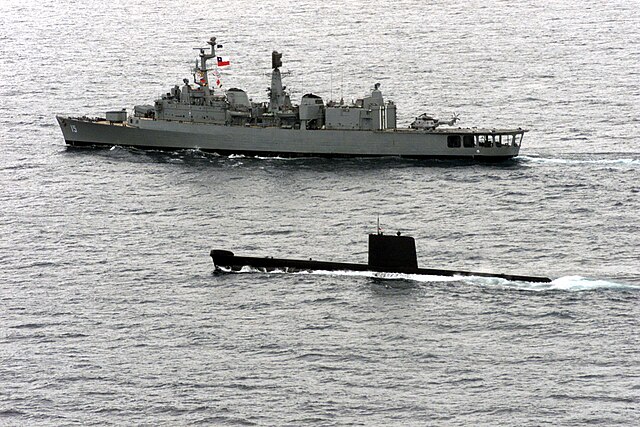
The Chilean government ordered two Oberon-class submarines from Scott’s Shipbuilders Engineering Co., Ltd. O’Brien sailed and arrived at Punta Arenas on 10 August 1976 and Hyatt on 10 February 1977. Both were capable of 12/17 knots surfaced/submerged but were a bit larger than the standard class at 90 meters long and 2,030 tons surfaced, 2,410 tons submerged in displacement. They indeed had a new powerplant rated for 6,000 bhp but kept the original eight 21-inch torpedo tubes. They also carried German SUT torpedoes. Both were eventually decommissioned on 31 December 2001, replaced by the new Scorpène-class O’Higgins and Carrera.
O’Brien (S22) was laid down at Scott Lithgow on 17 January 1971, launched on 21 December 1972 and completed on 15 August 1976. She was decommissioned in 2002 but preserved in Valdivia as a museum ship*.
Hyatt (S23) was also laid down at Scott Lithgow but about a year later on 10 January 1972, launched 26 September 1973 and completed on 27 September 1976. She was decommissioned in 2002 and sold for scrap in 2003.
*O’Brien was sold to the city of Valdivia in 2002 to be converted into the first submarine museum of Chile, and through modifications in the ASMAR shipyards for a display starting on December 2017, at the end of Avenida Costanera Arturo Prat, facing the Corte de Apelaciones.
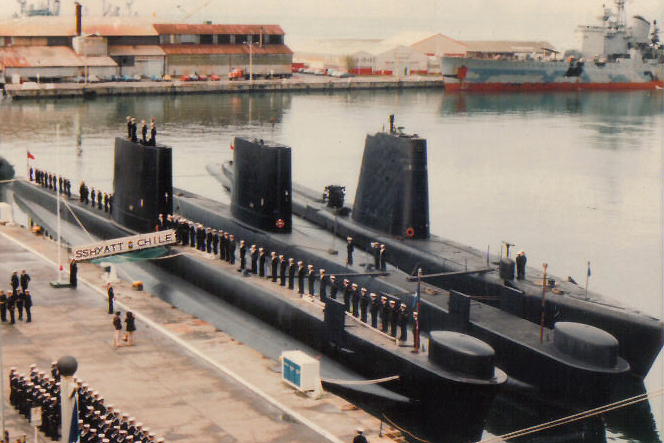
Hyatt, O-Brien and Simpson (A Guppy III) in the 1980s
Read More/Src
Books
The story of the Canadian Submarine Service – by Julie H. Ferguson
Brown, D.K. & Moore, George (2003). Rebuilding the Royal Navy: Warship Design Since 1945. Chatham Publishing.
Chant, Christopher (1987). A Compendium of Armaments and Military Hardware. Routledge.
Ferguson, Julie H. (1995). Through a Canadian Periscope: The Story of the Canadian Submarine Service. Toronto: Dundurn Press.
Gimblett, Richard H., ed. (2009). The Naval Service of Canada 1910–2010: The Centennial Story. Toronto: Dundurn Press.
Hadley, Michael L.; Huebert, Rob & Crickard, Fred W., eds. (1992). In Quest of Canadian Naval Identity. McGill-Queen’s University Press.
Hennessy, Peter; Jinks, James (2015). The Silent Deep. Allen Lane.
Jackson, Robert (ed.). The Encyclopedia of Warships, From World War Two to the Present Day.
Macpherson, Ken; Barrie, Ron (2002). The Ships of Canada’s Naval Forces 1910–2002 (Third ed.). Vanwell Publishing.
Patrick, Rex (September 2014). “Submarines and Special Forces”. Asia Pacific Defence Reporter. 40 (7).
Sharpe, Richard, ed. (1996). Jane’s Fighting Ships, 1996–97 (99th ed.). Surrey: Jane’s Information Group.
Stevens, David; Sears, Jason; Goldrick, James; The RAN, Centenary History of Defence. Vol. III. Oxford University Press.
The Naval Institute Guide to World Naval Weapon Systems, Norman Friedman
Links
en.wikipedia.org/ List_of_Oberon-class_submarines
maritime.org/
beaconlit.com/cdnsubs.html
Oberons still in existence
flickr.com/ Brazilian Oberon
Model Kits
Full records on scalemates
OzMods 1:350, The Resin Shipyard 1:350, OKB Grigorov and Starling Models 1:700
3D
https://www.thingiverse.com/thing:6345288
https://3dwarehouse.sketchup.com/model/9e3c0b7fb69ec3997cd1f8dd6fbce8fb/Oberon-Class-Submarine
HMS Ocelot photo tour

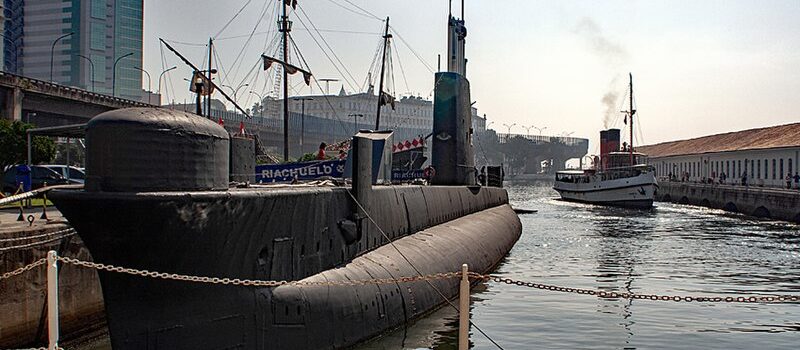

 Latest Facebook Entry -
Latest Facebook Entry -  X(Tweeter) Naval Encyclopedia's deck archive
X(Tweeter) Naval Encyclopedia's deck archive Instagram (@navalencyc)
Instagram (@navalencyc)





 French Navy
French Navy Royal Navy
Royal Navy Russian Navy
Russian Navy Armada Espanola
Armada Espanola Austrian Navy
Austrian Navy K.u.K. Kriegsmarine
K.u.K. Kriegsmarine Dansk Marine
Dansk Marine Nautiko Hellenon
Nautiko Hellenon Koninklije Marine 1870
Koninklije Marine 1870 Marinha do Brasil
Marinha do Brasil Osmanlı Donanması
Osmanlı Donanması Marina Do Peru
Marina Do Peru Marinha do Portugal
Marinha do Portugal Regia Marina 1870
Regia Marina 1870 Nihhon Kaigun 1870
Nihhon Kaigun 1870 Preußische Marine 1870
Preußische Marine 1870 Russkiy Flot 1870
Russkiy Flot 1870 Svenska marinen
Svenska marinen Søværnet
Søværnet Union Navy
Union Navy Confederate Navy
Confederate Navy Armada de Argentina
Armada de Argentina Imperial Chinese Navy
Imperial Chinese Navy Marinha do Portugal
Marinha do Portugal Mexico
Mexico Kaiserliche Marine
Kaiserliche Marine 1898 US Navy
1898 US Navy Sovietskiy Flot
Sovietskiy Flot Royal Canadian Navy
Royal Canadian Navy Royal Australian Navy
Royal Australian Navy RNZN Fleet
RNZN Fleet Chinese Navy 1937
Chinese Navy 1937 Kriegsmarine
Kriegsmarine Chilean Navy
Chilean Navy Danish Navy
Danish Navy Finnish Navy
Finnish Navy Hellenic Navy
Hellenic Navy Polish Navy
Polish Navy Romanian Navy
Romanian Navy Turkish Navy
Turkish Navy Royal Yugoslav Navy
Royal Yugoslav Navy Royal Thai Navy
Royal Thai Navy Minor Navies
Minor Navies Albania
Albania Austria
Austria Belgium
Belgium Columbia
Columbia Costa Rica
Costa Rica Cuba
Cuba Czechoslovakia
Czechoslovakia Dominican Republic
Dominican Republic Haiti
Haiti Hungary
Hungary Honduras
Honduras Estonia
Estonia Iceland
Iceland Eire
Eire Equador
Equador Iran
Iran Iraq
Iraq Latvia
Latvia Liberia
Liberia Lithuania
Lithuania Mandchukuo
Mandchukuo Morocco
Morocco Nicaragua
Nicaragua Persia
Persia San Salvador
San Salvador Sarawak
Sarawak Uruguay
Uruguay Venezuela
Venezuela Zanzibar
Zanzibar Warsaw Pact Navies
Warsaw Pact Navies Bulgaria
Bulgaria Hungary
Hungary

 Bundesmarine
Bundesmarine Dutch Navy
Dutch Navy Hellenic Navy
Hellenic Navy Marina Militare
Marina Militare Yugoslav Navy
Yugoslav Navy Chinese Navy
Chinese Navy Indian Navy
Indian Navy Indonesian Navy
Indonesian Navy JMSDF
JMSDF North Korean Navy
North Korean Navy Pakistani Navy
Pakistani Navy Philippines Navy
Philippines Navy ROKN
ROKN Rep. of Singapore Navy
Rep. of Singapore Navy Taiwanese Navy
Taiwanese Navy IDF Navy
IDF Navy Saudi Navy
Saudi Navy Royal New Zealand Navy
Royal New Zealand Navy Egyptian Navy
Egyptian Navy South African Navy
South African Navy






























 Ukrainian Navy
Ukrainian Navy dbodesign
dbodesign